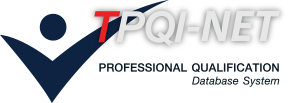หน่วยสมรรถนะ
Apply work health and safety procedures at supervisor level in aviation.
สาขาวิชาชีพการบิน
รายละเอียดหน่วยสมรรถนะ
| 1. รหัสหน่วยสมรรถนะ | AVT-OETI-237A |
| 2. ชื่อหน่วยสมรรถนะ | Apply work health and safety procedures at supervisor level in aviation. |
| 3. ทบทวนครั้งที่ | / |
| 4. สร้างใหม่ |
|
ปรับปรุง |
|
| 5. สำหรับชื่ออาชีพและรหัสอาชีพ (Occupational Classification) | |
|
7232 Aircraft engine mechanics and fitters |
|
| 6. คำอธิบายหน่วยสมรรถนะ (Description of Unit of Competency) | |
| This skill unit requires application of work health and safety (WHS) Acts, regulations, codes of practice and enterprise WHS procedures during the supervision of all aviation maintenance activities performed on aircraft and in workshops. | |
| 7. สำหรับระดับคุณวุฒิ |
| 1 | 2 | 3 | 4 | 5 | 6 | 7 | 8 |
|---|---|---|---|---|---|---|---|
| 8. กลุ่มอาชีพ (Sector) | |
| 7232 Aircraft Mechanics | |
| 9. ชื่ออาชีพและรหัสอาชีพอื่นที่หน่วยสมรรถนะนี้สามารถใช้ได้ (ถ้ามี) | |
| N/A | |
| 10. ข้อกำหนดหรือกฎระเบียบที่เกี่ยวข้อง (Licensing or Regulation Related) (ถ้ามี) | |
| N/A | |
| 11. สมรรถนะย่อยและเกณฑ์การปฏิบัติงาน (Elements and Performance Criteria) |
| หน่วยสมรรถนะย่อย (EOC) | เกณฑ์ในการปฏิบัติงาน (Performance Criteria) | รหัส PC (ตามเล่มมาตรฐาน) |
รหัส PC (จากระบบ) |
|---|---|---|---|
| 101504.01 Implement and monitor participative arrangements for the management of WHS. |
101504.01.01 Able to provide regularly and accurately and explain clearly relevant provisions of WHS legislation and codes of practice the work group, Information about identified hazards and the outcomes of risk assessment and risk control procedures to the work group. |
101504.01.01 | 199405 |
| 101504.01 Implement and monitor participative arrangements for the management of WHS. |
101504.01.02 Able to are implement and monitor organizational procedures for consultation over WHS issues to ensure that all members of the work group have the opportunity to contribute and make known promptly the outcomes of consultation over WHS issues to the work group. |
101504.01.02 | 199406 |
| 101504.02 Implement and monitor the organization’s procedures for identifying hazards and assessing risks. |
101504.02.01 Able to identify and report existing and potential hazards in the work areas so that risk assessment and risk control procedures can be applied, monitor and report results regularly existing risk control measures in accordance with workplace procedures. |
101504.02.01 | 199407 |
| 101504.02 Implement and monitor the organization’s procedures for identifying hazards and assessing risks. |
101504.02.02 Able to implement control measures to prevent recurrence and minimize risks of hazardous events based on the hierarchy of control if within scope of responsibilities and competencies or alternatively referred to designated personnel for implementation. |
101504.02.02 | 199408 |
| 101504.03 Implement and monitor the organization’s procedures for providing WHS training. |
101504.03.01 Able to identify WHS training needs accurately, specifying gaps between WHS competencies required and those held by work group members and make arrangements for fulfilling identified WHS training needs in both on and off-the-job training programs in consultation with relevant parties. |
101504.03.01 | 199409 |
| 101504.03 Implement and monitor the organization’s procedures for providing WHS training. |
101504.03.02 Able to complete arrangements for fulfilling identified WHS training needs in both on and off-the-job training programs in consultation with relevant parties. |
101504.03.02 | 199410 |
| 12. ความรู้และทักษะก่อนหน้าที่จำเป็น (Pre-requisite Skill & Knowledge) | |
|
N/A |
|
| 13. ทักษะและความรู้ที่ต้องการ (Required Skills and Knowledge) | |
|
(ก) ความต้องการด้านทักษะ N/A (ข) ความต้องการด้านความรู้ N/A |
|
| 14. หลักฐานที่ต้องการ (Evidence Guide) | |
|
(a) Performance Evidence (b) Knowledge Evidence |
|
| 15. ขอบเขต (Range Statement) | |
|
This part allows for different work environments and conditions that may affect performance. Essential operating conditions that may be present (depending on the work situation, needs of the candidate, accessibility of the item, and local industry and regional contexts) are included. |
|
| 16. หน่วยสมรรถนะร่วม (ถ้ามี) | |
| N/A | |
| 17. อุตสาหกรรมร่วม/กลุ่มอาชีพร่วม (ถ้ามี) | |
| N/A | |
| 18. รายละเอียดกระบวนการและวิธีการประเมิน (Assessment Description and Procedure) | |
|
The assessment are based on combination of paper exams, interviewing, and practical demonstrations depending on the assessors’ judgement.This unit may be assessed through a combination of workplace (or a realistic simulation) and off-the-job assessment. The context of assessment should ensure that evidence relating to the contingency management component of competency can be collected. Evidence must include observation in the workplace as well as off-the-job techniques, such as interviews and simulations. Conditions for simulations should accurately simulate the range of circumstances (especially with regard to a realistic range of emergencies and hazardous events) that the individual could be expected to deal with in the workplace and allow for discussion. The individual must be given access to: |
|
